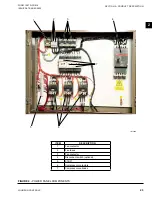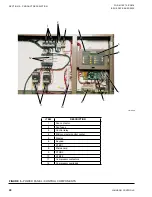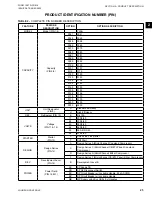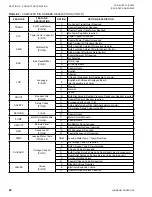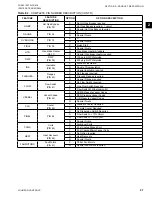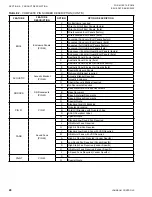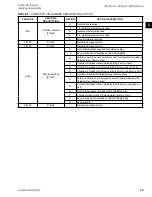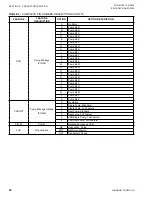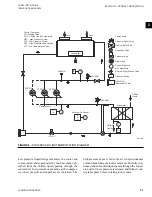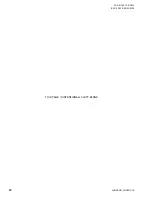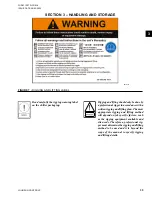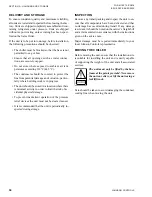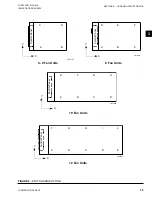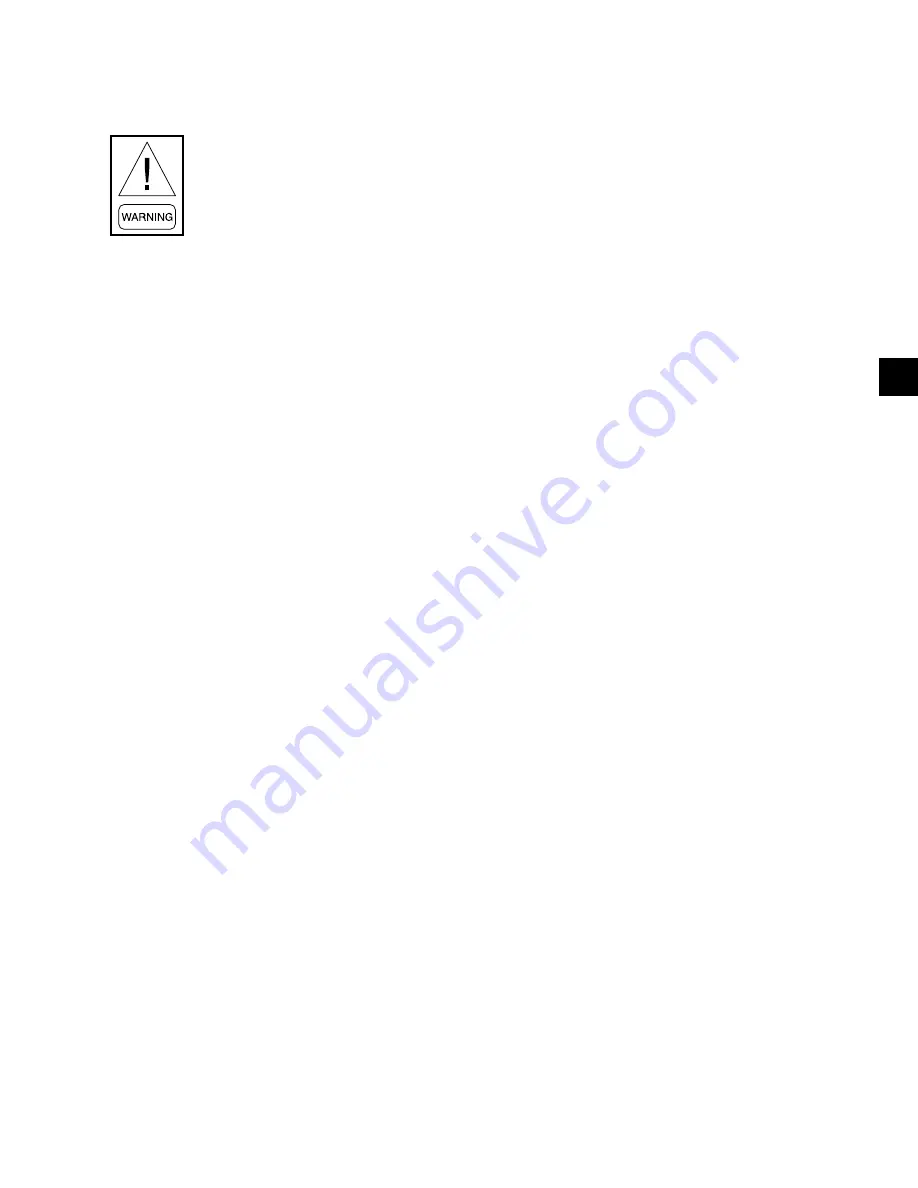
JOHNSON CONTROLS
37
FORM 150.72-ICOM6
ISSUE DATE: 08/03/2022
4
To ensure warranty coverage, this equip-
ment must be commissioned and serviced
by an authorized Johnson Controls
service mechanic or a qualified service
person experienced in chiller installation.
Installation must comply with all appli-
cable codes, particularly in regard to elec-
trical wiring and other safety elements
such as relief valves, HP cutout settings,
design working pressures, and ventilation
requirements consistent with the amount
and type of refrigerant charge.
Lethal voltages exist within the control
panels. Before servicing, open and tag
all disconnect switches.
INSTALLATION CHECKLIST
Perform the following steps before placing the units in
operation.
• Inspect the unit for shipping damage.
• Rig unit using spreader bars.
• Open the unit only to install water piping sys-
tem. Do not remove protective covers from water
connections until piping is ready for attachment.
Check the water piping to ensure cleanliness.
• Pipe the unit using good piping practice. Refer to
ASHRAE handbook section 215 and 195.
• Ensure the wiring is tight and meets NEC and lo-
cal codes.
• Check that the unit is installed and operated with-
in limitations. See
.
STARTUP/COMMISSIONING
The following pages outline detailed procedures to be
followed to install and start-up the chiller.
LOCATION AND CLEARANCES
Units are designed for outdoor installations on ground
level, rooftop, or beside a building. Location should
be selected for minimum sun exposure and to ensure
adequate supply of fresh air for the condenser. The
units must be installed with sufficient clearances for air
entrance to the condenser coil, for air discharge away
from the condenser, and for servicing access.
SECTION 4 – INSTALLATION
In installations where winter operation is intended and
snow accumulations are expected, additional height
must be provided to ensure normal condenser air flow.
Clearances are listed in
.
Foundation
Mount the unit on a flat and level foundation, floor,
or rooftop capable of supporting the entire operating
weight of the equipment. See
for operating weight.
If the unit is elevated beyond the normal reach of ser-
vice personnel, install a suitable catwalk capable of
supporting service personnel, their equipment, and the
compressors.
Ground Level Locations
It is important that the units be installed on a substan-
tial base that will not settle. A one piece concrete slab
with footers extended below the frost line is highly rec-
ommended. Additionally, the slab should not be tied to
the main building foundations as noise and vibration
may be transmitted. Mounting holes (5/8 in. dia.) are
provided in the steel channel for bolting the unit to its
foundation
(see
Dimensions on page 35
).
For ground level installations, precautions should be
taken to protect the unit from tampering by or injury to
unauthorized persons. Screws and/or latches on access
panels will prevent casual tampering. However, further
safety precautions such as a fenced-in enclosure or
locking devices on the panels may be advisable.
Rooftop Locations
Choose a spot with adequate structural strength to
safely support the entire weight of the unit and service
personnel. Care must be taken not to damage the roof.
Consult the building contractor or architect if the roof
is bonded. Roof installations should have wooden
beams (treated to reduce deterioration), cork, rubber,
or spring type vibration isolators under the base to min-
imize vibration.
Noise Sensitive Locations
Efforts should be made to ensure that the chiller is not
located next to occupied spaces or noise sensitive areas
where chiller noise level would be a problem. Chiller
noise is a result of compressor and fan operation.

